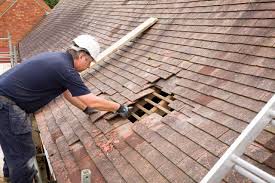The purpose of a swimming pool is quite clear: to enjoy swimming, being in fresh, clear water. If any of these conditions are not met, when it becomes cloudy, green due to algae, and acquires an unpleasant musty smell, there is no longer any talk of any positive emotions. Moreover, diving can even be dangerous, because with low water quality, prerequisites are created for the development of pathogenic organisms. Children who can swallow contaminated water are especially at risk of staying in such an environment.
To avoid a negative scenario, proper and regular cleaning and maintenance of the pool will be required.
Causes of blockages, dirt, algae
The following factors are indicated among the reasons for the deterioration of water quality in an artificial reservoir, the formation of pollution and algae in it:
- accumulation of biological fluids (sweat, urine), particles of exfoliated epithelium, and external skin care products in water;
- littering by users themselves;
- increased temperature of the surrounding space and the water itself;
- excessive solar insolation, which causes active photosynthesis, and promotes plant development.
However, the main factor underlying the appearance of vegetation in a reservoir and turbidity is an imperfect purification system, ignoring the use of chemicals aimed at combating algae, disinfection, and maintaining the required pH level.
Important: Looking for reliable pool draining services in Cave Creek, AZ? Our experts provide safe and efficient pool draining to keep your pool in top condition. Contact us today!
It is necessary to know: that with properly organized care any risks can be avoided. In modern industry, chemical production provides a whole range of such means.
Methods of water purification in the pool
Water purification in the pool is carried out in three directions.
Mechanically
We are talking about the use of hand-held tools, brushes, nets, and an underwater vacuum cleaner, designed to collect debris from the surface, dirt, and sand from the bottom of the tank and its walls.
To combat silt, fine sand, dust, and other suspended matter, special filters are used that pump water out of the pool, clean it, and return it. They are available in several versions.
Sand type, which operates with the help of crushed sorbents, is preferable in small pools with frequent water changes. Disadvantages – the need for periodic cleaning of the filter device under high water pressure, and the inability to isolate impurities smaller than 20 microns. In this case, a complete replacement of quartz sand is recommended annually.
Another option is a system with a removable cartridge made of filter material. Such a device will be more effective, but expensive. Regular replacement of cartridges is required.
The most effective option is diatomaceous (diatomite) filters, which ensure the removal of the smallest particles, up to 1 micron. The filler in them is a rock formed by the remains of special diatomaceous algae. Having installed such a device, you can expect that water disinfection will be required several times less often than after using a sand and cartridge system. However, the components for such a filter quickly fail, and replacement is supposed several times a year. Considering their high cost, this can be expensive.
With the help of chemical reagents
Chemicals used for maintenance of artificial reservoirs are presented in the following variants:
1. Disinfectants based on chlorine, bromine, or active oxygen.
They are used to cope with bacteria and other microorganisms that multiply rapidly under the influence of sunlight, coloring the water greenish. Chemicals developed for this purpose are available in a variety of forms, tablets, solutions, granules, and powders. The active substance in the main ones is chlorine. The choice of this substance is due to its high efficiency in disinfecting solutions from the actions of pathogenic microorganisms, and its rapid entry into a chemical reaction. An equally valuable quality in favor of the popularity of chlorine-based preparations is availability.
The only negative factor is the side effect
A sharp unpleasant smell, the ability to dry the skin, and the risks of use in people prone to allergies. A well-known disadvantage is the discoloration of bathing suits. However, confirmation of the safety of disinfectants with chlorine is the fact that, according to current regulations, the content of this substance in the pool is two times lower than in drinking water.
Chemical reagents without chlorine are products made based on bromine
They have no smell, and can quickly cope with the purification of a large volume of water. However, the relatively high cost and rapid loss of activity under the influence of sunlight are factors by which such products are significantly inferior to chlorine-containing preparations.
In reagents created based on an aqueous solution of hydrogen peroxide
The active component is oxygen atoms, effective in destroying pathogenic microorganisms, bacteria, viruses, and fungi. However, such an active substance does not affect algae. As in other cases of using chlorine-free disinfectants, hydrogen peroxide-based products have to be combined with chlorine-containing compounds. When using it, it is also necessary to take into account that its effectiveness is significantly reduced when the water temperature rises above 28 degrees.
The advantages of reagents with active oxygen are the absence of foam, unpleasant odor, and irritating effect on the skin, maintaining a stable pH level of water. In addition, such preparations quickly show their disinfecting effect after dissolution.
The downside is the need to carefully observe the concentration of the drug. Exceeding the indicator is dangerous due to its negative impact on the body.
2. Algaecides are used to prevent the growth of algae.
These are preparations that cause the death of plants by damaging their spores. They are effective both for destroying existing algae and for preventive purposes so that the water does not bloom in the future and green plaque does not accumulate on the walls of the tank. With their regular use, you can expect that you will not have to resort to mechanical collection of algae.
3. Coagulants to eliminate water turbidity
Disinfection preparations cannot cope with dirt and increased turbidity. This task is solved by coagulants and flocculants. Slightly different in the mechanism of action, their task is to bind individual particles of pollution into larger compounds, a kind of colonies. After the heavy flakes fall to the bottom as sediment, they can be easily collected with a vacuum cleaner or removed by filtration.
4. Preparations for normalizing pH levels
The acid-base balance of water in the pool should be 7.2-7.4. Special reagents and test strips are used to conduct the analysis. Deviation of results from the norm is associated with certain risks. Thus, an increase in acidity and a change in pH below 7 contributes to the corrosion of metal elements of the pool, damage to the filter system, and reduces the operational characteristics of the hydraulic structure. An alkaline environment is dangerous due to its positive effect on the development of bacteria, and the appearance of lime deposits on the walls and bottom of the pool.
In addition, with a normal acid-base balance, the activity of chemicals used for cleaning is enhanced. This allows you to reduce their concentration, and avoid such side effects as a burning sensation in the eyes and mucous membranes.
To ensure a stable pH level, agents have been developed that can affect the existing balance in one direction or another. Depending on the situation, agents are used to increase or decrease the acidity of the water.
Important: Ensure crystal-clear swimming pool water with our professional water care services in Tempe, AZ. Keep your pool safe and clean year-round. Book your service today
Electrophysical methods
This method of non-reagent cleaning of an artificial reservoir involves the installation of ozone generators, UV light, ultrasound, an electrolysis system, equipment for ionizing water with copper and silver, etc. Due to the complexity of the equipment and high cost, the use of such systems is only possible in artificial reservoirs for public use.
Basic principles of pool maintenance
Pool maintenance concerns not only the condition of the water but also the internal surfaces of the artificial reservoir. The general principles of its maintenance, ensuring safety, are as follows:
- Installation of filtering devices.
- Collection of garbage that accumulates on the water surface, leaves, and insects.
- By the regulations – water treatment with chemicals. This ensures disinfection, prevents water blooms, simplifies the removal of other contaminants, and extends the service life of the tank.
Cleaning frequency
Pool cleaning is mandatory and is carried out regularly, by the designated regulations. The frequency of procedures is determined by the pool volume, its load, the presence and capacity of the filtration system, as well as whether the tank is open or closed. In determining the cleaning parameters, significant importance is also given to the quality of the water: with an increase in hardness, more thorough and frequent maintenance will be required.
In this case, the adjustment is shown under the following conditions:
- An increase in temperature conditions creates special risks for increased algae growth and bacterial proliferation;
- Frequent use of the pool, a large number of users;
- Errors in the operation of the filtration mechanism;
- Incorrect dosing of chemicals;
- Unstable pH level of water;
- In the case of an open body of water – unfavorable environmental factors, and windy weather, contribute to the pollution of the water surface with leaves, dust particles, bird feathers, and household waste.
Urgent cleaning of the pool is carried out when plaque and debris appear on the surface of the pool. And the color of the water changes.
When starting a pond, a shock treatment is indicated, when high-concentration chemicals are used. Having provided the desired effect, the subsequent use of such agents is carried out by the plan. With regular, doses, by the instructions, adding the agent will ensure a supporting concentration of the preparation, prolonging the achieved effect.
Products of Chemoform company
For all questions related to the selection or purchase of chemicals for pool care. As well as equipment for mechanical cleaning of reservoirs, and filtration systems. You can use the services of the Chemoform company. Among the advantages:
- A convenient website that not only presents the full range of products but also provides accessible explanations for each item. After studying the instructions, any person will have no difficulty understanding the nuances of using the drug, and the dosage of chemicals.
- High level of competence of call center employees. Having received a call or an online application. The manager will call back and will readily provide explanations regarding the choice of products. The specifics of filling out an application, payment, and delivery of products. (For customers in the Moscow region, it will be free).
- The company’s experience in the market exceeds 15 years. Positive customer reviews are excellent confirmation of the quality of the services provided by the company.
Read Other: The Best Pool Automation Systems for Hands-Free Maintenance





